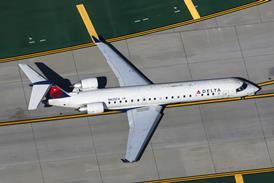Governments have done much to help their ailing carriers through the crisis. What the industry really needs from them is not state cash, but the freedom to consolidate.
Surely we have been here before? A decade after the Gulf War crisis and once more the airline sector is close to becoming so untenable that governments have had to step in with a helping hand to keep their carriers aloft. Admittedly this time around the help is less blatant than the helpings of aid served out to many of Europe's flag-carriers in the early1990s. It is also true that it is the US government's turn to take the lead with its programme of grants and loan guarantees. But it is far from alone as demonstrated by the renationalisation of Air New Zealand or the state intervention in Belgium, Switzerland and now Malaysia.
Yet governments do not deserve too much credit. They have collectively failed to do the one sure thing that could allow the industry to help itself - that is the freedom to consolidate.
A mix of competition policy, state aid and foreign ownership rules still ensure that the weakest linger on, but also that the strongest are never quite strong enough, nor sufficiently global, to take crisis in their stride.
The state aid issue is perhaps the most immediately soluble. Brussels, to its credit, has all but winnowed it out among the member states. And Washington can show that it has hedged its programme of federal loan guarantees with sufficient conditions to ensure that it is no easy option. Indeed only one major has so far received cash, although others may yet be thrown the lifeline. Even if they are not, US bankruptcy laws may achieve the same end by default, just as they did in the early 1990s. There is, it seems, a law of airline dynamics which dictates that carriers may be created but never destroyed.
So if the airline business is to remain outside the auspices of the World Trade Organisation, then at the very least, it needs a set of hard guidelines as to how and when support can be given, as well as some muscle to enforce such rules. Some airlines may fail as a result, just as other businesses do, but others will step in if they are freed to do so.
Competition policy, certainly in the USA and Europe, has also often boiled down to an effort to protect the small and stop the big from getting bigger. But why? As shown in the World Airline Rankings in this issue, the majors, whose market dominance the competition watchdogs so fear, hardly appear to be turning in monopoly profits. By the terms of other global industries, such as automotive or banking, even these airline giants appear sub-scale. The largest, AMR, accounts for less than 6% of world revenues.
Contrary to popular opinion, barriers to entry are relatively low in the airline industry, as witnessed by the rapid growth of the low-cost sector. Over 7% of world passenger journeys last year were made on independent low-cost carriers. That figure rises to 13% in North America, where Southwest Airlines and others have continued to thrive despite the degree of consolidation among US majors. If there are barriers to new entrants then they centre more on lack of infrastructure opportunities outside the major hubs. That indeed is a fit concern for regulators everywhere.
As Airline Business has argued many times before, what benefits the consumer most is robust competition between strong, efficient players. Policy- makers must lay down the usual guidelines to ensure that the competition is fair, but that is all. As US Airways files for bankruptcy, it is worth asking what was achieved by preventing it from falling into the arms of one of the many domestic and even international suitors who have looked at the business over the past decade?
That leads on to the thornier question of foreign ownership caps and the related complication of a bilateral system that still assumes the concepts of sovereignty in vogue half a century ago. If there has been a change over the last decade, then it is just how shaky the idea of national ownership looks in the 21st Century. It not only restricts the ability of airline groups to spread their risk across world markets - highlighted by the current pain of the US industry- but also limits access to investment, either from commercial investors or airline partners.
There seems little hope that the USA will take a lead on ownership, as it did on open skies ten years ago. In the words of one veteran lobbyist, the issue is not even on the radar scope - an idea consigned to the Washington think-tanks.
However, Europe could provide a spur. Next month's ruling from the European Court is expected to uphold the claims from Brussels that nationality clauses in bilaterals are in conflict with European law. That could not only undermine the foundation of the bilateral system, but also further chip away at the rationale for keeping airlines "national". Practical politics will no doubt take the edge off the decision and any practical result could still take years to emerge. But the debate needs to begin soon if the industry is not to find itself still shackled to the concept of the nation state in another decade's time.
Source: Airline Business























